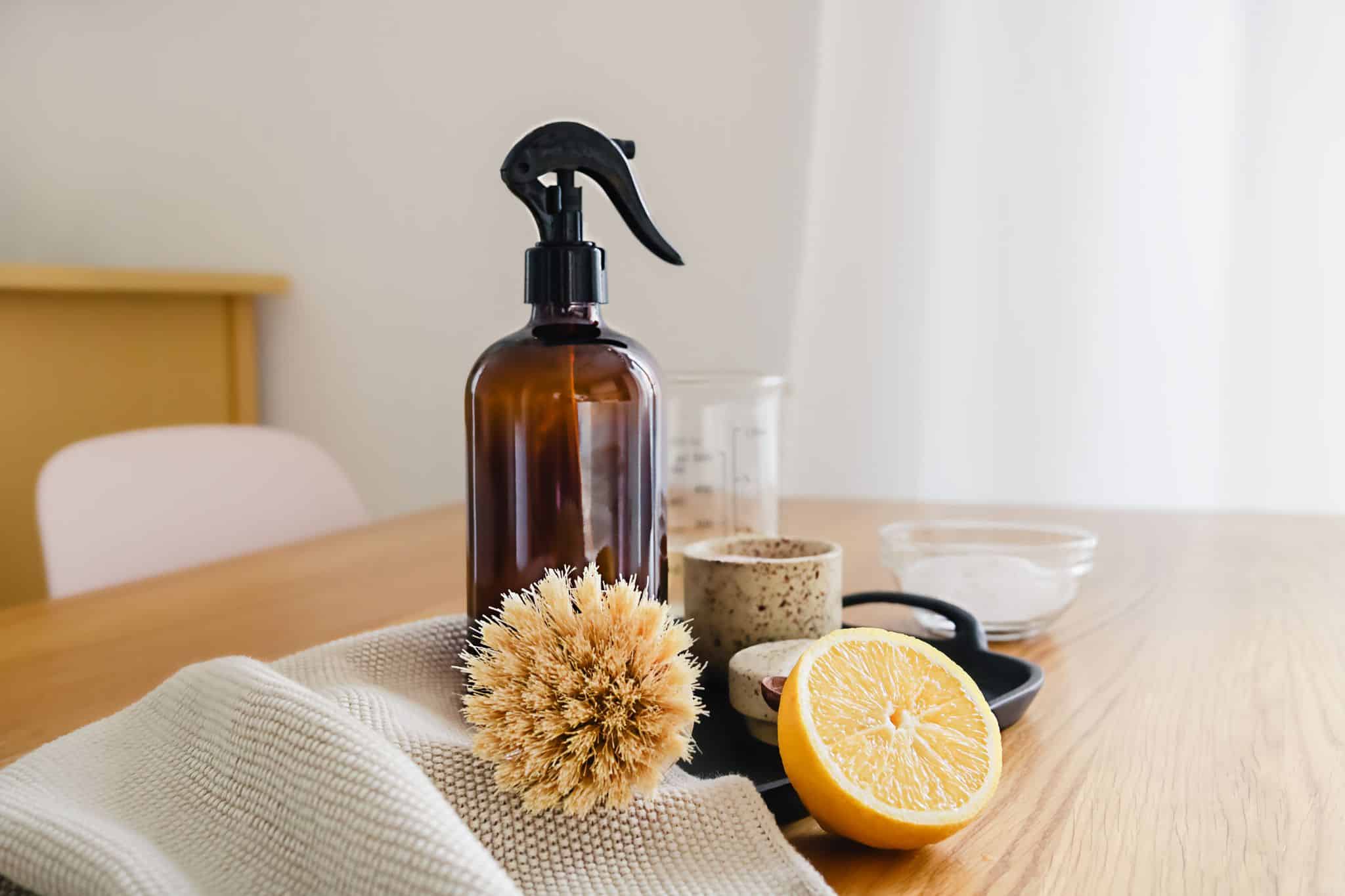Table of Contents
 It’s almost that time again—when the weather starts warming up, the days get longer, and people start breaking out their dust cloths, vacuums, and storage bins for some spring cleaning. Not everyone looks forward to this annual cleanup, however. According to a 2021 poll, over half of Americans dread spring cleaning.
It’s almost that time again—when the weather starts warming up, the days get longer, and people start breaking out their dust cloths, vacuums, and storage bins for some spring cleaning. Not everyone looks forward to this annual cleanup, however. According to a 2021 poll, over half of Americans dread spring cleaning.
If you don’t want to face the overwhelming endeavor of spring cleaning this year, consider a new tactic: minimalize! That is, sort through the clutter and get rid of things you don’t need—making your home more spacious and orderly, putting your mind at ease, and making it even easier to clean next year. Try out these ideas for decluttering and making your space more minimalistic.
1. Plan before You Start
It’s tempting to jump straight into your cleaning and organizing without making a plan, but diving straight in can make it easier to lose focus or get overwhelmed. Keeping things organized in a list will help you maintain control and clean more efficiently.
2. Categorize Your Cleaning
Consider taking your cleaning one room at a time (bedroom, closet, kitchen, bathroom, etc.) or one category at a time (clothes, books, electronics, etc.). This will help keep you focused on one area or type of item instead of getting distracted or overwhelmed by the other things to do. Check out these tips for a complete list of steps you can take when cleaning each room.
Remember, you don’t have to do it all in a day! You can space it out as much as you need—perhaps 30 minutes a day or whatever is reasonable for you.
3. Decide What to Get Rid Of
This may be the hardest step; it can be difficult to say goodbye to your belongings. And while there is no perfect formula to help you decide what to keep and what to toss, here are a few tests you can try out when making your decisions:
- Use it or lose it. A simple test is to recall if you have used the item in the past six months or if you plan to use it in the next six. If the answer is no, it might be time to get rid of the item (unless you know you will absolutely need it in the future).
- Out of sight, out of mind. If you are not sure whether you will use an item, consider leaving it in a donation bag for a few months. If you need it or miss it during that time, perhaps you should keep it. However, if you forget it exists, then you will likely be just fine without it.
- Toss the extras. You may have multiple items that fulfill the same purpose. Ask yourself if there are any other things with the same function and if you need more than one. If you have extra, keep your favorite and toss the rest.
- Joy. Of course, there is always the Marie Kondo method: Does it spark joy? If yes, keep it. If not, get rid of it.
- Functionality. Let’s add this to the previous question: Is it useful? Because let’s be honest: We’re not sure if dish soap brings anyone joy, but let’s not get carried away. Disposable items like food, cleaning supplies, and paper products are usually good to keep around, unless you have them in excess.
These are a few questions to help you decide if something is worth keeping, but use your best judgment as you make your individual decisions.
4. Organize What You Keep
Once you have gotten rid of the clutter, you can clean up your home and leave it spacious by organizing minimalistically. For instance, instead of buying new storage containers, use the boxes you already have. Try stacking and arranging things vertically so they take up less space than if they were spread out on the ground. Finally, make sure everything has a place and isn’t just lying around on tables or floors.
5. Make It Fun
Cleaning and organizing can be a drag if you look at it that way. However, you can choose to have some fun with it! Listen to music, put on a podcast or movie, invite a friend over to chat, or do whatever else you can enjoy doing while multitasking. And enjoy the opportunity to move around and make your home more enjoyable to live in!
6. Keep It Minimal
Once you have decluttered, keep it that way! The “one in, one out” rule is a good method to avoid accumulating more things. If you get a new item, throw out or donate the old one that is replaced. Better yet, buy something new only if there is a reason to get rid of the one you currently have.
As spring cleaning comes around the corner this year, try out the minimalist strategy for cleaning and organizing. These manageable steps will keep your home clutter-free, and next year’s spring cleaning will be a breeze. Happy spring cleaning!







